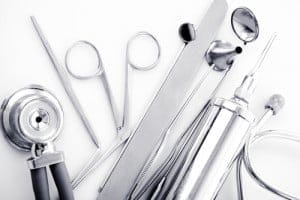The recent closing of several research facilities by the Center for Disease Control has led the University of Pittsburgh Medical Center’s professor Amesh Adalja to fear a public backlash against research that he considers very, very vital. Adalja and other biosecurity experts know the importance of research in biological organisms, ranging from protection from biological terrorism to eradication of certain strains of diseases throughout the world. To assuage public fear and create opportunities to continue this research, people need to understand the vital role safety procedures play in the medical research field.
Biological Safety Laws
There is a huge body of regulation for biological safety. The National Institute of Health, the Center for Disease Control and the U.S. Department of Health and Human Services are just a few of the governmental organizations that are watching America’s laboratories. Local governing bodies take their cues from the federal bodies and develop site specific regulations. The University of Pittsburgh has its own biological safety manual that is in compliance with all of the federal regulations, for example. For clean room environments, Federal Standard 209E is the overarching requirement, which gives authority to ISO Class 7 clean room rules. These rules define the specifics of particulate removal in the air and the water systems.
Filtration of Air and Water
Sterile medical equipment manufacturer Apple Rubber explains the levels of filtration defined in the ISO Standards. Their Class 7 clean room maintains filtration so that there is a maximum of 10,000 particles that are larger than 0.5 microns for every cubic foot within the room. A Class 6 clean room will have fewer than 1,000 particles per cubic foot.
Water and air are linked for clean room technology because the water is used as part of the purification system for the air. So if the water is not properly cleaned, it would contaminate the air within the lab. They decontaminate their water using ultraviolet light, reverse osmosis and sub-micron filtering. Since pure water does not conduct electricity, electro-conductivity is used to continually test the water before it is pumped into the air filtration system.
Protection From Disaster
Ready.gov was developed as a joint venture of the Department of Homeland Security and the Federal Emergency Management Agency to keep the general public aware of potential risks and offer resources in the case of disaster. In a list that includes natural disasters and pandemics, they break down biological terrorist threats as bacterial, viral or toxic. In the same way that a clean room filters particulates, Ready.gov recommends using High-Efficiency Particulate Air (HEPA) filters to protect against accidental or purposeful biological exposure. These filters are the same ones that are used to protect people with severe allergies.
Role of Public Perception on Biosecurity
A survey conducted by The Woodrow Wilson International Center For Scholars found that most Americans find synthetic biological research risky and unnatural; however, they seem to understand the global importance that this research can yield. Having stringent, enforceable regulations that protect against accidental and deliberate exposure can prevent the public backlash that researchers fear may jeopardize research in this field.
Throughout the year, our writers feature fresh, in-depth, and relevant information for our audience of 40,000+ healthcare leaders and professionals. As a healthcare business publication, we cover and cherish our relationship with the entire health care industry including administrators, nurses, physicians, physical therapists, pharmacists, and more. We cover a broad spectrum from hospitals to medical offices to outpatient services to eye surgery centers to university settings. We focus on rehabilitation, nursing homes, home care, hospice as well as men’s health, women’s heath, and pediatrics.








